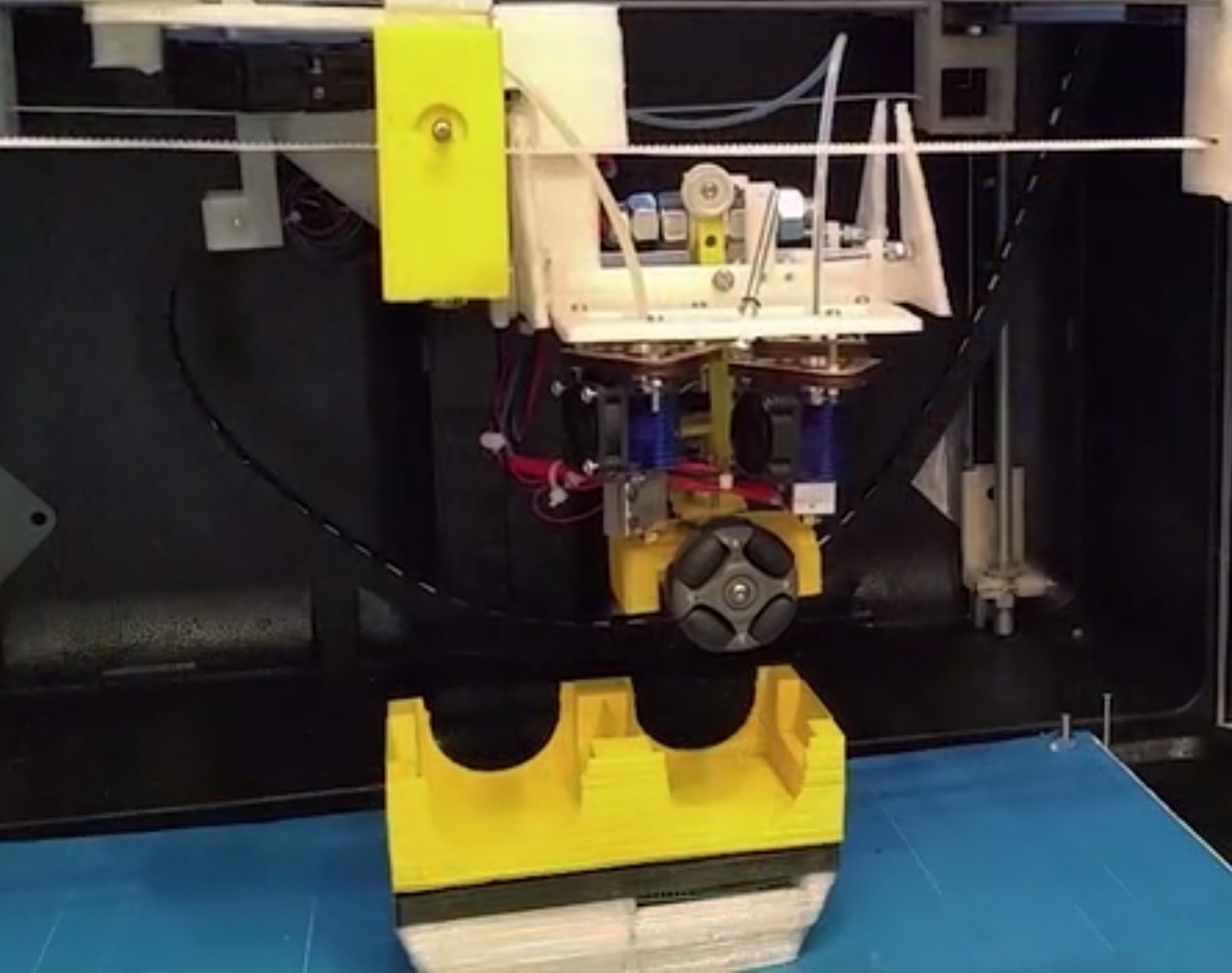
A new prototype 3D printer has been launched that provides the additional ability of product assembly.
The IR3 by UK-based Buzz Technology appears to be a standard filament-extrusion 3D printer, but it has a couple of extra features that make it quite unique.
The main added feature is the ability to place non-3D printed components into the print during print operations. For example, a motor housing could be 3D printed, and the motor itself could be dropped into place partway through the print. Subsequent printing would complete the housing around the motor.
As if that isn’t enough, this machine is also designed to 3D print electrically conductive leads. This means that the motor we just dropped into the housing could be connected as well, given a proper connector design.
Many such items can be “assembled” during printing. They say:
By picking and placing modules into a print and connecting them electrically by printing conductive tracts, it is able to create fully functional working products. These modules are existing products such as WiFi enabled electronics, rechargeable battery packs, display screens, motors with removable wheels all wrapped in standard size housings. The IR3 can also print separation layers in EcoFex PLA which enable these modules to easily be removed and reused in a new product when the old one is no longer required…saving both money and the environment.

This seems like a good idea, since we always see 3D prints of cases, housings or other parts intended to be mated to other non-3D printed components. The IR3 could make that process a bit easier.
Currently they’re testing the market for this type of equipment with a crowdfunding campaign. For around USD$5,000 you can get your hands on an early version of the IR3. You’ll also be able to plug into the company’s maker network for easier collaboration with other makers and designers.
We’re quite curious about the reception for a product with these features. At first, you might think that you can simply pause the print operation and drop in components yourself, which is entirely possible with almost any 3D printer these days. On the other hand, if you could rely on automation to install components, perhaps you’d design your object differently to take advantage of that feature.
Via Kickstarter

